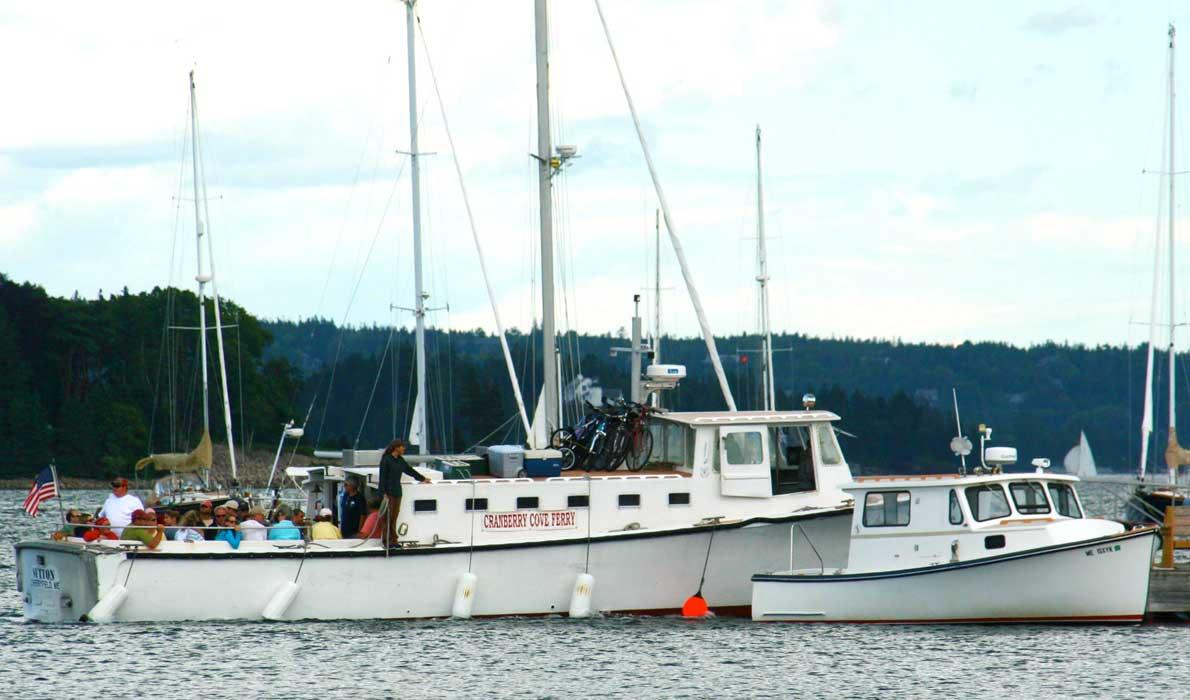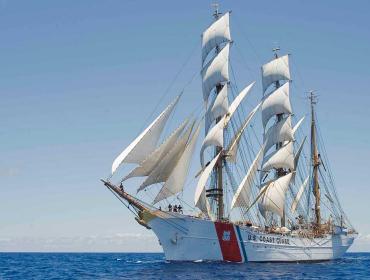Posted August 25, 2015
Last modified August 25, 2015
CRANBERRY ISLES — On a sunny summer day, the ferry from Southwest Harbor to the Cranberry Isles is packed with day-trippers and year-round and summer residents.
The day-trippers carry sunscreen and cameras, the residents lug groceries. The captain’s mate slings a couple of bikes on the roof of the pilothouse, tying them down while everyone settles in for a 40-minute ride that stops first at Great Cranberry Island and then Little Cranberry Island, also known as Islesford, with on-call service to Sutton’s Island.
On the island docks, the trip happens to intersect with another ferry, originating in Northeast Harbor. Much earlier in the morning, a Monday-Friday commuter boat takes early-risers to the mainland for jobs, medical appointments and other activities.
The ferries, currently operated by three separate businesses, are an island lifeline. Along with mail and groceries, they help the island economies by bringing visitors who patronize island bed-and-breakfasts, gift shops and museums. Boat traffic also includes barges, run by various operators to carry fuel, construction materials, vehicles and even modular homes; and water taxi and emergency on-call service. Two different operators run the summer and winter commuter boat.
The patchwork approach to all this activity, though, is currently the subject of a town-wide discussion that began in 2014 when selectmen formed a transportation task force to study options for coordinating the system.
“We basically have four different ferry operators running at different times and from different ports,” said task force chairman Ron Axelrod, who has a professional background in transportation design and engineering. “Service had been somewhat deteriorating.”
Last year, the town contracted with water transportation consultant Charles Norris, of Norris & Norris Associates in Cambridge, Mass., to assist the task force in identifying various combinations of public and private management and operation plans.
“We’re looking at a long-term water transportation system that includes optimum service, vessel types and docks,” said Axelrod. “For instance, we have to extend the town dock in Islesford, because in the winter and at low tide, ferry boats can’t get in there at times. So what we need to do is say, ‘What is the ideal service we want? Now let’s figure out the plan to get there.’ The town has to start thinking about dedicating some of its funds to water transportation.”
This fall, the task force is scheduled to present to the board of selectmen its recommendation, which might focus on a new nonprofit management model to provide all services currently handled by private operators. This would be accomplished by purchasing the necessary vessels through town, state and federal funding, and securing landing rights in Southwest Harbor and Northeast Harbor.
Safe, reliable and efficient water transportation feeds into the town’s overall goal to sustain the year-round community, numbering in the 50s on Great Cranberry, and in the 70s on Islesford.
For the past 50 years, the Cranberry Isles have been served by family-owned Beal & Bunker, whose boats carry passengers, mail and hand-freight year-round from Northeast Harbor. In conjunction with that service, the town of Cranberry Isles has long leased 123 year-round and about 50 seasonal parking spaces in Northeast Harbor in two town lots, for Cranberry Isles residents and visitors to use. The cost of the lease is covered by parking fees.
Around 2002, the Cranberry Isles spent $2.5 million to buy and develop property in Manset for a summer parking lot, with about 100 spaces going for assigned parking and 15-20 spaces designated for overnight visitor parking. At that time, a Bar Harbor-based business, Downeast Windjammer Cruises, established Cranberry Cove Ferry to run a seasonal passenger/hand-freight ferry that runs from Southwest Harbor and Manset.
About five years ago, the Town of Cranberry Isles established the 6:30 a.m. departure from the town landings to Northeast Harbor, returning from Northeast Harbor at 5 p.m., for a Monday-through-Friday commuter service funded by taxpayers with a partial reimbursement from the Federal Transportation Administration. The service involves contracts with two boat companies. In the summer, Sail Acadia runs a morning commuter boat; the regular ferry runs late enough in the evening to carry people back home. In the winter, Downeast Windjammer runs morning and evening boats, since the last regular ferry out of Northeast Harbor is mid-afternoon. The primary purposes of the winter boat are to accommodate commuting to off-island jobs and allow students to attend the mainland high school.
The three-year contract for the winter commuter boat contract finished on April 30. The task force plans to look at a one-year extension, or other options, as it moves through the transportation planning process.
The task force developed a community survey and workshops over the past and current year that identified major issues. These include aging vessels, outdated freight-handling systems, service breakdowns that are especially onerous when it comes to essentials such as fuel and utility needs, schedule disruptions and, most importantly, said Axelrod, the safety of vessels, crew and service operations. Other problems have been mail exposed to the weather, lack of fare transparency for freight and ADA access.
The report will:
- analyze route operations and vessel specifications.
- landings and infrastructure needs.
- passenger and freight market demand.
- a financial plan with estimated costs and revenues.
- and an action plan and implementation schedule.
Contributed by




